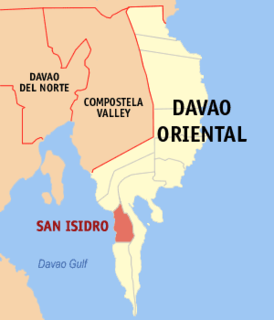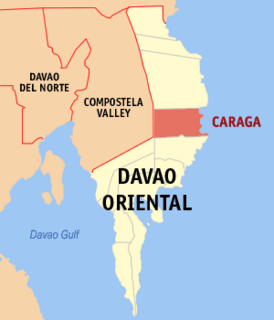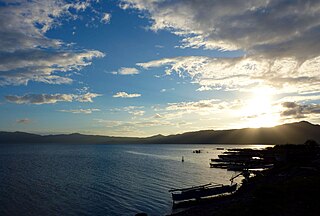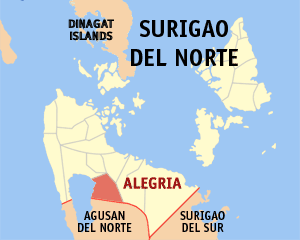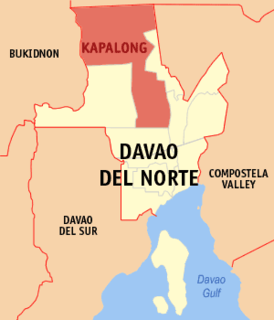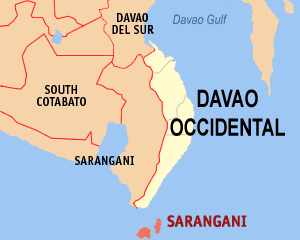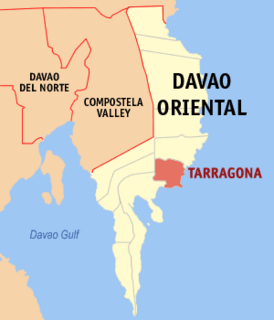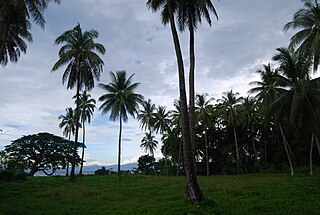Cateel | |
|---|---|
| Municipality of Cateel | |
 Map of Davao Oriental with Cateel highlighted | |
Location within the Philippines | |
| Coordinates: 7°47′N126°27′E / 7.78°N 126.45°E Coordinates: 7°47′N126°27′E / 7.78°N 126.45°E | |
| Country | |
| Region | Davao Region (Region XI) |
| Province | Davao Oriental |
| District | 1st District |
| Founded | October 29, 1903 |
| Barangays | 16 (see Barangays) |
| Government | |
| • Type | Sangguniang Bayan |
| • Mayor | Erlinda C. Nuñez |
| • Vice Mayor | Camilo T. Nuñez |
| • Congressman | Corazon N. Malanyaon |
| • Electorate | 27,964 voters (2019) |
| Area | |
| • Total | 545.56 km2 (210.64 sq mi) |
| Population (2015 census) [3] | |
| • Total | 40,704 |
| • Density | 75/km2 (190/sq mi) |
| Economy | |
| • Income class | 2nd municipal income class |
| • Poverty incidence | 30.61% (2015) [4] |
| • Revenue (₱) | 137,649,998.41 (2016) |
| Time zone | UTC+8 (PST) |
| ZIP code | 8205 |
| PSGC | |
| IDD : area code | +63 (0)87 |
| Climate type | tropical rainforest climate |
| Native languages | Davawenyo Surigaonon Cebuano Kalagan language Kamayo Mandaya |
| Website | www |
Cateel, officially the Municipality of Cateel, is a 2nd class municipality in the province of Davao Oriental, Philippines. According to the 2015 census, it has a population of 40,704 people. [3]

Davao Oriental is a province in the Philippines located in the Davao Region in Mindanao. Its capital is Mati, and it borders the province of Compostela Valley to the west, and Agusan del Sur and Surigao del Sur to the north. The province is the traditional homeland of the Mandaya and Kagan people.

The Philippines, officially the Republic of the Philippines, is an archipelagic country in Southeast Asia. Situated in the western Pacific Ocean, it consists of about 7,641 islands that are broadly categorized under three main geographical divisions from north to south: Luzon, Visayas and Mindanao. The capital city of the Philippines is Manila and the most populous city is Quezon City, both part of Metro Manila. Bounded by the South China Sea on the west, the Philippine Sea on the east and the Celebes Sea on the southwest, the Philippines shares maritime borders with Taiwan to the north, Japan to the northeast, Vietnam to the west, Palau to the east, and Malaysia and Indonesia to the south.
Contents
Cateel is the home of the Aliwagwag Falls, located at barangay Aliwagwag within the Aliwagwag Protected Landscape. It is a towering waterfalls considered by hydraulic engineers as the highest in the country and regarded as one of the most beautiful falls in the Philippines. It is a series of 84 falls appearing like stairway to heaven with various heights among the steps ranging from 2 to 33.5 metres (7 to 110 ft). One step is measured 22 metres (72 ft) and another is 20 metres (66 ft). Overall Aliwagwag Falls has a height of 340 metres (1,120 ft) and a width of 20 metres (66 ft). All these in the midst of virgin forest, with a river at the foot of the falls. 13 rapids to cross.

The Aliwagwag Protected Landscape is a protected area that preserves a major drainage catchment in the southern Philippine island of Mindanao in the Davao Region. It contains the headwaters of the Cateel River in the southern Diuata Mountain Range which provides the water source and irrigation for surrounding rice fields and communities in Davao Oriental and Compostela Valley provinces. It was named after the remote rural village in the municipality of Cateel where Aliwagwag Falls, the country's highest waterfall, is located.





